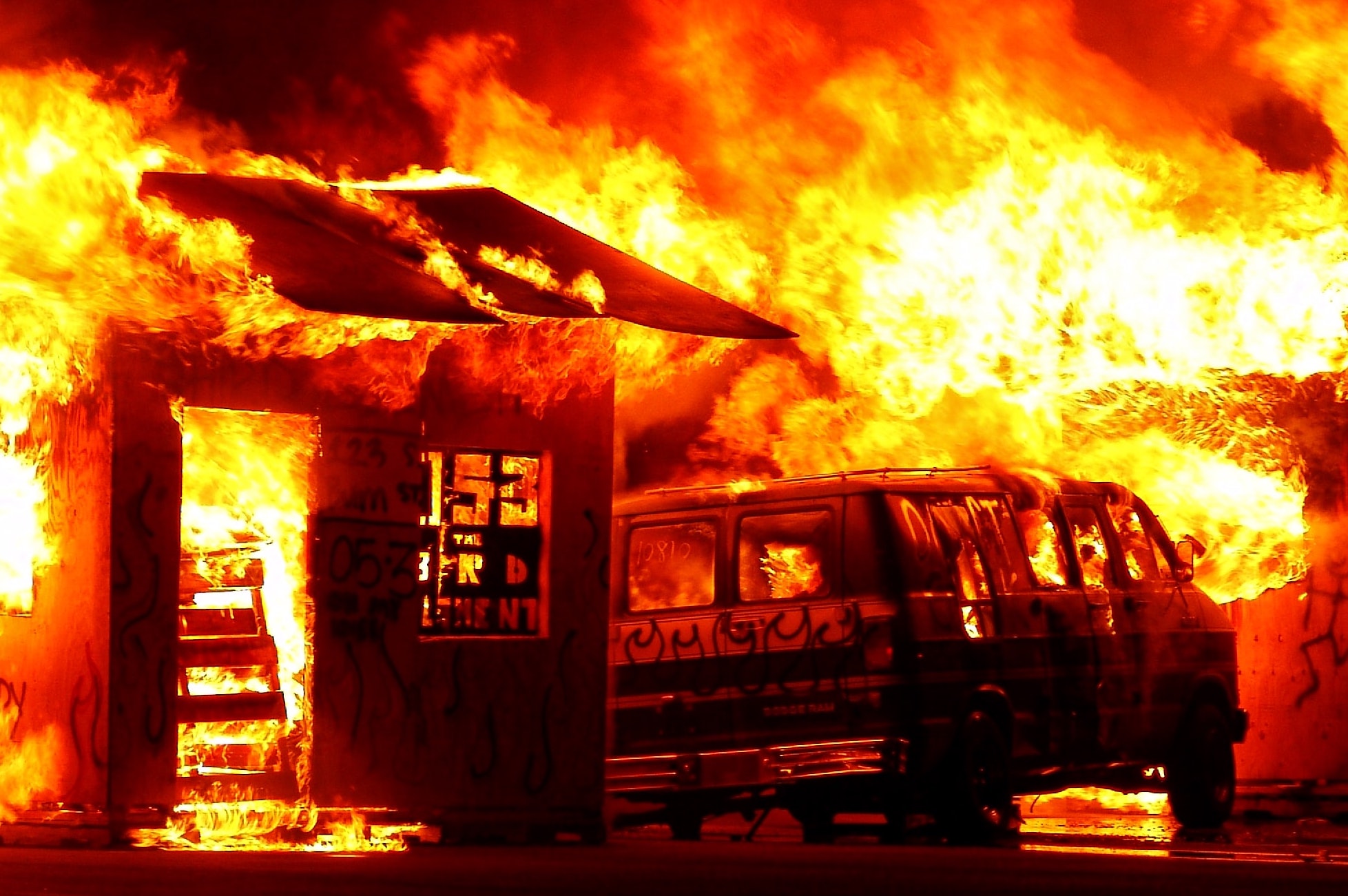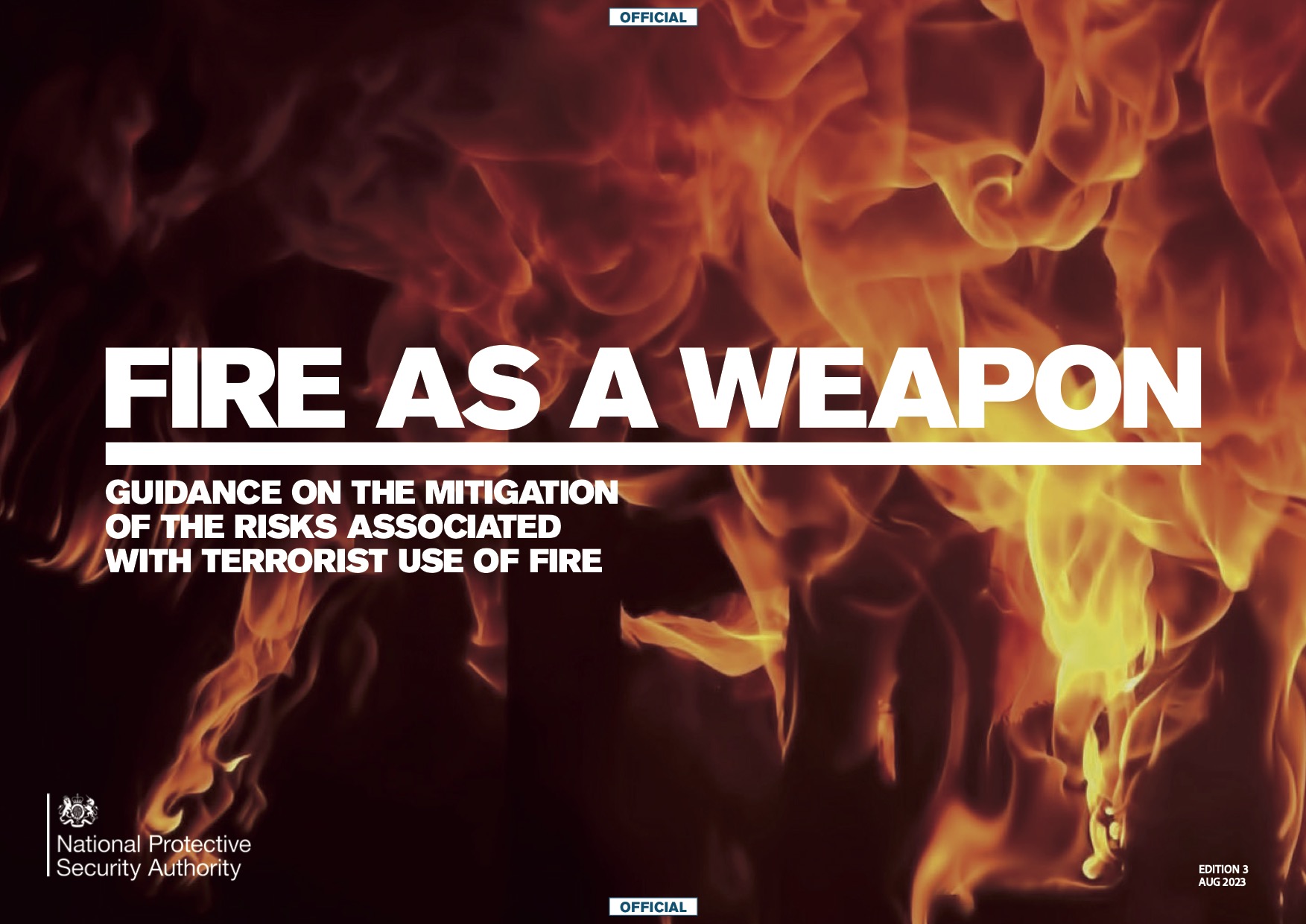Introduction

Fire as a weapon (FAW) attacks are intended to cause harm. Fire and smoke alone can provide a lethal mix, when combined with other terrorist attack methods as part of a Marauding Terrorist Attack (MTA), this can create an extremely challenging and complex situation. Starting fires, during such attacks can be relatively easy and may require limited planning and preparation. However, a successful attack is likely to require detailed planning and involve capable attackers. Coordinating a response can be very difficult for both site teams and the emergency services.
How Fire as a Weapon is used
FAW is likely to be employed in one or more of the following ways:
- Used as a distraction tactic which will draw the attention or response of security officers, which may allow vulnerabilities to be exploited, e.g. attackers may enter a building while security officers are focused on the fire.
- Augment other attack method(s) (bladed weapons, firearms etc) and so cause injury or damage to property, through the use of accelerants e.g. petrol bombs (aka Molotov cocktails) or other incendiary methods.
- Trigger a fire evacuation which might cause people to become vulnerable to an attack.
- Causing disruption or delay with the intent of preventing or restricting emergency responders confronting the attackers, carrying out lifesaving operations and extinguishing the fire.
Guidance
A new guidance document has been developed in collaboration with the Home Office, National Counter Terrorism Security Office (NaCTSO) and the National Fire Chiefs Council (NFCC). This document highlights the mitigation of the risks posed by terrorists conducting attacks that combine the use of fire with other attack methods, known as a fire as a weapon (FAW) attack.
The document is aimed at those responsible for the protection of Critical National Infrastructure (CNI) sites, sensitive sites and crowded places. It provides an understanding of the FAW threat, details key hazards created by FAW attacks, how current fire related regulations address the issues and sets out steps to be considered when looking to reduce the risk from such a threat.
It forms part of the series of Marauding Terrorist Attacks (MTA) guidance documents released under title Marauding Terrorist Attacks - Making your organisation ready.
